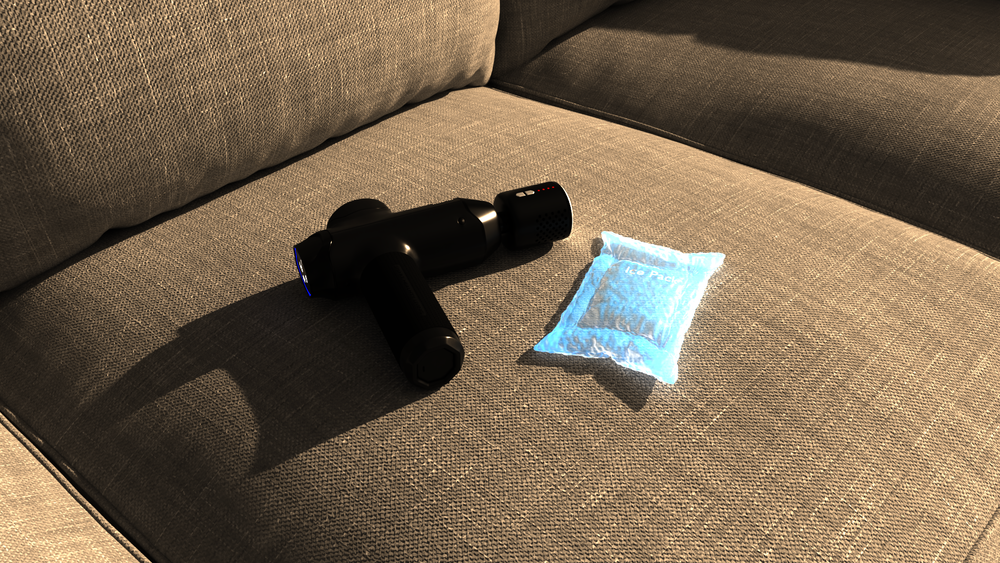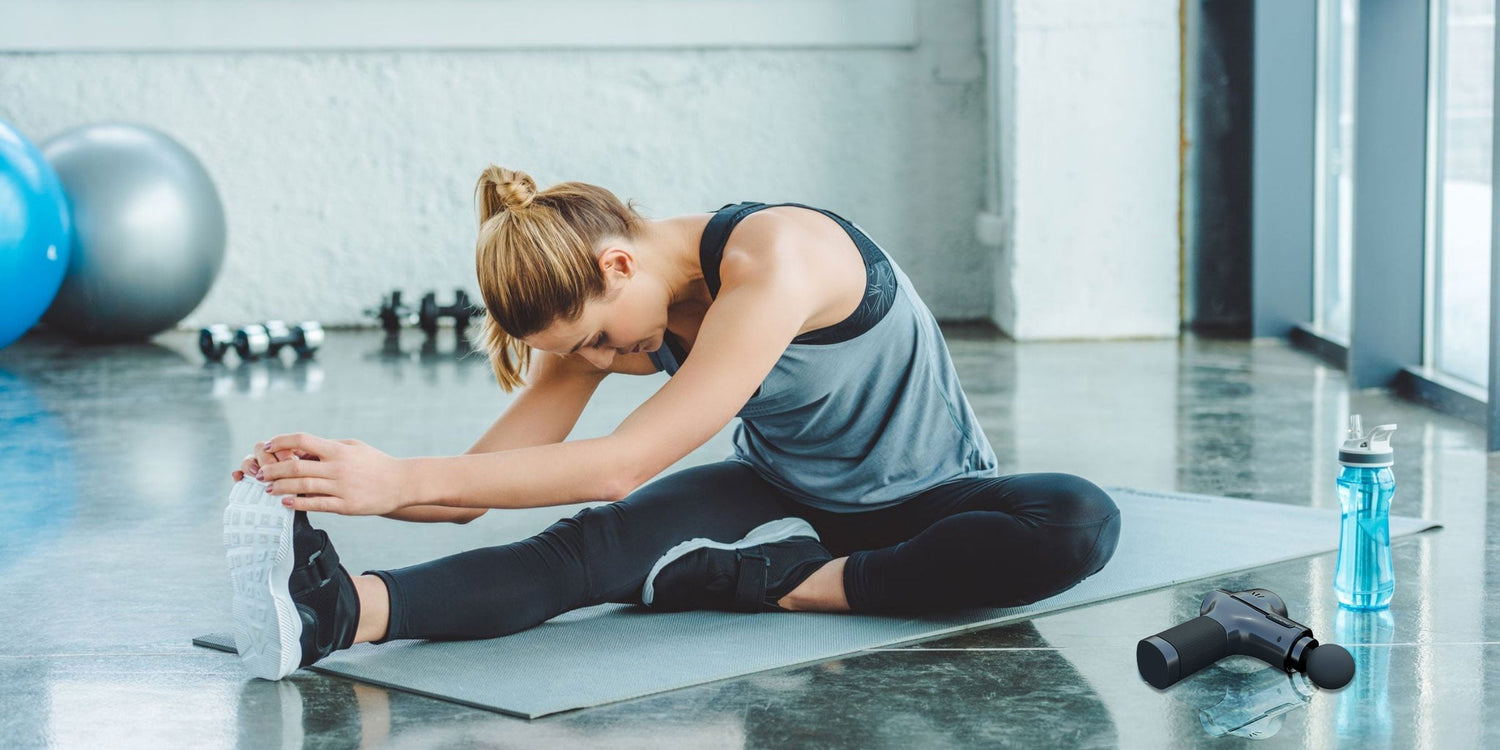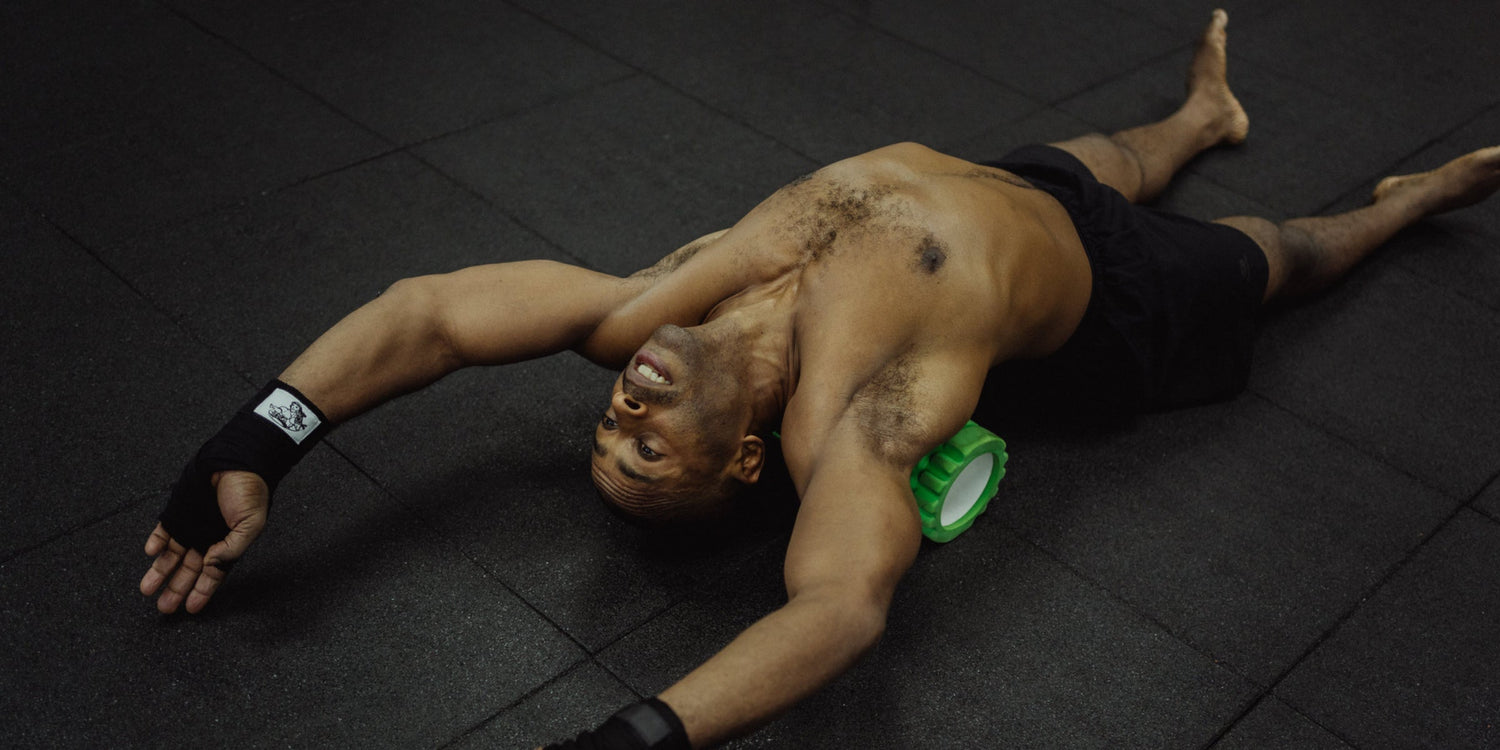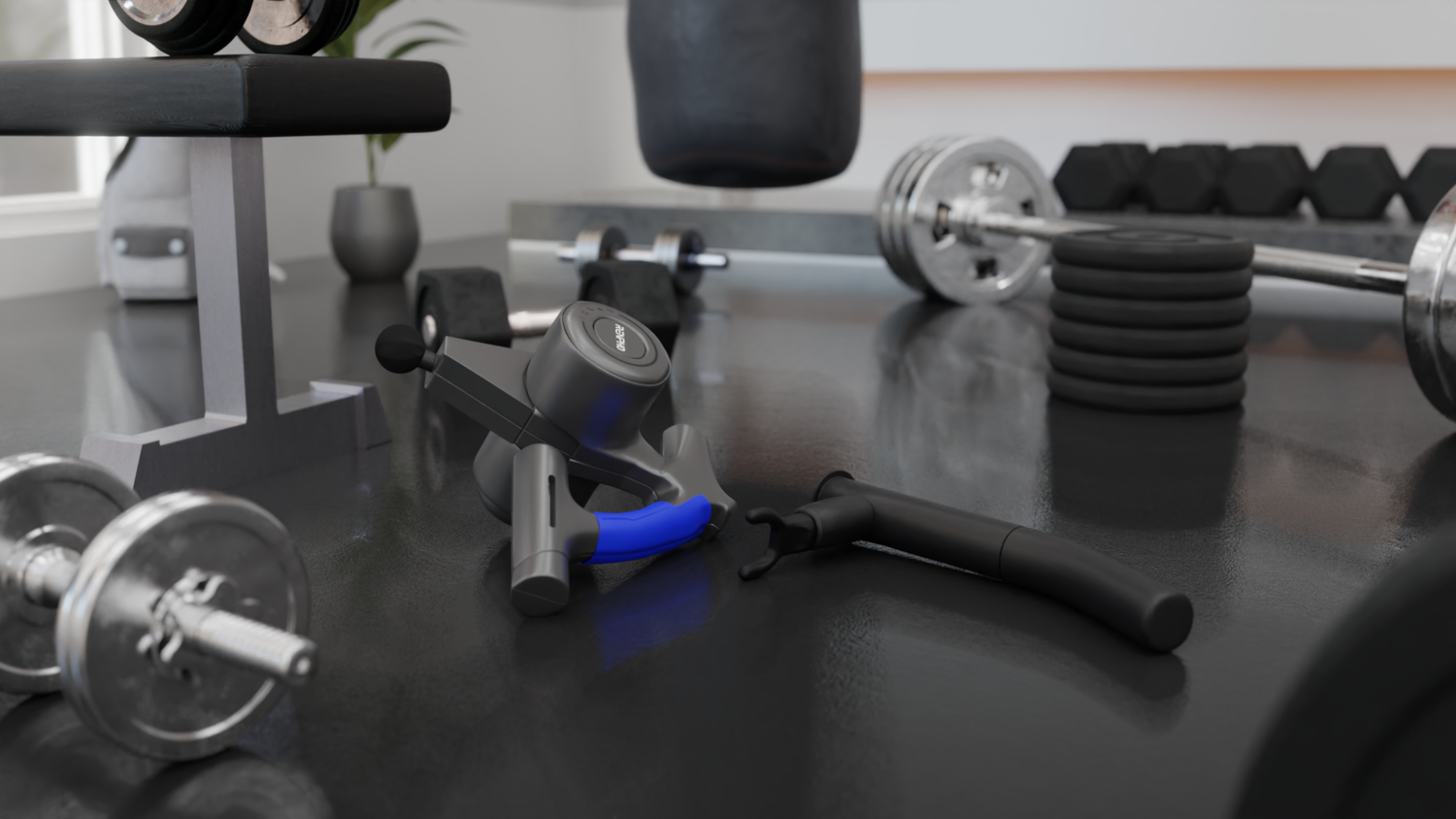Can Massage Guns Provide Relief for Strained Muscles?

Stay tuned to our latest news
However, can these handheld devices truly provide the relief they promise? Let’s delve into the science behind massage guns, explore their potential benefits and limitations, and examine whether they can be a viable solution for alleviating strained muscles. Whether you're an athlete recovering from intense workouts or someone dealing with everyday muscle tension, let’s uncover the truth about massage guns and their potential role in muscle recovery.
What Are Strained Muscles?
Strained muscles, also known as muscle strains, occur when the muscle fibers are stretched or torn beyond their normal capacity. This type of injury often results from overexertion, sudden movements, or improper form while exercising or doing physical activities. It can affect any muscle in the body, but they commonly occur in the muscles of the lower back, neck, shoulders, hamstrings, and calves.
When treating strained muscles, alternative treatments like massage guns can be considered. These handheld devices use percussive therapy to target deep muscle tissues and alleviate tension. However, taking precautions when using a massage gun on a strained muscle is essential, such as starting with the lowest setting and gradually increasing intensity, avoiding prolonged use on one area, and never using it directly on a bone or joint.
Potential risks of using a massage gun on a strained muscle include aggravating the injury, causing bruising, or exacerbating inflammation. Alternative methods for treating a muscle strain may include rest, ice, compression, and elevation, as well as physical therapy, stretching, and over-the-counter pain relievers.
Moreover, it is crucial to consult a doctor for supervision, as individual responses to this treatment may vary. Additionally, seeking guidance from a healthcare professional can ensure that the chosen treatment aligns with the specific needs and conditions of the strained muscle.
What is a Massage Gun?
A massage gun, also known as a percussion massager, works by using percussive therapy to deliver rapid pulses of pressure deep into the muscle tissues. This helps to provide a deep tissue massage, breaking up knots, and increasing blood flow to the area. The rapid pulses mimic the sensation of a massage therapist's hands, providing similar benefits in a more convenient and portable device.
The device can be used on various muscle groups throughout the body, making it versatile for different needs. Moreover, most massage guns come with a variety of attachments. The RENPHO Power Thermacool Massage Gun comes with 6 different attachments capable of providing relief to different muscle groups.
Nevertheless, it is important to consult with a healthcare professional before using a massage gun, especially if you have any underlying health conditions or injuries. Safety precautions include avoiding use on broken or injured skin, not using the device on your head or face, and starting with the lowest speed setting to prevent discomfort or injury. Lastly, always follow the manufacturer's guidelines for proper usage and care of the device.
3 Benefits of Using a Massage Gun

Massage guns have become a popular tool for anyone looking for quick and effective muscle recovery. These handheld devices boast a range of benefits that we will explore in this section. So, whether you are a professional athlete or simply looking to ease everyday aches and pains, a massage gun could be the solution you’ve been searching for.
-
Increased Blood Flow
A massage gun effectively increases blood flow to the affected area through percussion therapy. The rapid pulses and vibrations from the massage gun help to dilate blood vessels, leading to improved circulation in the targeted muscles and tissues. This increased blood flow not only delivers essential oxygen and nutrients to the area but also removes waste products and toxins, reducing inflammation and promoting the body's natural healing process.
Additionally, improved circulation also helps to prevent the build-up of lactic acid and other metabolic waste products, reducing muscle soreness and fatigue.
Moreover, the overall impact of increased blood flow extends beyond localized healing. It can also contribute to improving the overall health and wellness of the body. By promoting better circulation, a massage gun can help to enhance cardiovascular function, boost energy levels, and support immune system function.
-
Improved Range of Motion
A muscle massage gun can improve your range of motion in several ways. Firstly, it enhances muscle flexibility by targeting deep tissue and breaking up muscle knots and adhesions. This allows for more efficient joint movement as the muscles surrounding the joint can relax and move more freely. The rapid percussive movements of the device also stimulate the nervous system, promoting greater muscle relaxation and overall flexibility.
Additionally, improved circulation from massage gun therapy can contribute to better range of motion by providing nutrients and oxygen for tissue repair. The increased blood flow helps to flush out toxins and reduce inflammation, aiding in the recovery and maintenance of healthy muscle tissue.
The benefits of improved range of motion include reduced pain, increased strength, and better performance of routine tasks such as bending, reaching, and lifting. Overall, a percussion massager can be an effective tool in improving flexibility and circulation, leading to a more active and pain-free lifestyle.
-
Convenient and Easy to Use
Using a massage gun for targeted muscle relief and therapy is a convenient and easy way to alleviate muscle tension and soreness. To use one, simply turn it on and choose the desired intensity level. Most massage guns have multiple speed settings, so start with a lower intensity and increase as needed for deeper muscle therapy.
Moreover, they also often come with different attachments, such as a bullet head for specific muscle areas, a flat head for larger muscle groups, and a round head for overall use. Choose the appropriate attachment for the targeted muscle area, and then turn on the massage gun to start the therapy.
You can use the massage gun on areas such as the neck, shoulders, back, arms, legs, and feet for efficient muscle relief. When using the massage gun, be sure to hold it at a 45-degree angle and let the gun do the work without applying too much pressure. Adjust the speed as needed for optimal therapy and relaxation.
Risks of Using a Massage Gun on a Strained Muscle
However, using a massage gun on a strained muscle can pose risks. A major example is the potential for increased inflammation and further damage to the already injured muscle fibers. This could potentially prolong the recovery period and worsen the initial injury.
It is important to understand the proper placement and usage of a massage gun to avoid injuring nerves, blood vessels, and other structures near the affected muscle. Improper usage can lead to bruising, excessive soreness, or even nerve damage.
Therefore, it is always advisable to seek a medical professional before using a massage gun when you have muscle strain to avoid unwanted injuries.
5 Alternative Treatments for Strained Muscles
Aside from massage guns, alternative treatments, such as rest, ice, compression, and elevation may be worth considering. However, it's important to do thorough research and consult with a healthcare professional before pursuing any alternative treatments to ensure they are safe and appropriate for your specific condition. With the right approach, alternative treatments can provide relief and aid in the healing process for strained muscles.
-
Compression
To apply compression to a strained muscle, you will need an elastic bandage. First, it's crucial to reduce swelling and provide support to the affected area. Start by wrapping the bandage around the strained muscle, ensuring that it is snug but not too tight. The compression helps to reduce swelling by preventing the accumulation of fluid in the injured area. It also provides support to the muscle, which can help reduce pain and promote healing.
Ensure not to wrap it too tightly, as this can impede blood flow and cause further damage to the muscle. Maintain good circulation while providing enough compression for support. If the bandage feels too tight or if you experience numbness, tingling, or increased pain, you should loosen the bandage immediately.
Applying compression to a strained muscle with an elastic bandage is an effective way to aid in the recovery process. Remember to regularly check the bandage and reapply it as needed to ensure proper support and compression for the strained muscle.
-
Rest and Ice
If you have a strained muscle, it is important to properly apply the rest and ice technique to help with inflammation and swelling. First and foremost, it is important to adhere to any recommendations provided by a healthcare professional.
To properly apply the rest and ice technique, start by resting the affected muscle. Avoid any activities that may aggravate the strain and try to keep the muscle in a relaxed position. Additionally, applying ice to the strained muscle can help to reduce inflammation and swelling. Use an ice pack or a bag of frozen vegetables wrapped in a towel and apply it to the affected area for 20 minutes at a time. It is important to not apply ice directly to the skin, as this can cause damage.
Repeat the process of applying ice for 20 minutes at a time, several times a day, to help manage the inflammation and swelling. It is also important to give the muscle time to rest and heal. By properly applying the rest and ice technique, you can help alleviate the symptoms of a strained muscle and support its recovery.
-
Elevation
To properly elevate an affected muscle to reduce swelling, use a pillow or cushion to prop up the affected area. Position the pillow so that the affected muscle is above the level of the heart. This will help promote proper circulation and decrease swelling in the area.
Elevating the muscle will allow for improved blood flow, which can help to reduce inflammation and decrease swelling. Make sure that the area is comfortably supported and elevated to prevent any additional discomfort. Keeping the affected muscle elevated for a period aid in reducing swelling and promoting the healing process. By following these guidelines and properly elevating the affected muscle, you can help alleviate the swelling and promote recovery.
-
Anti-Inflammatory Medications
Anti-inflammatory medications, like ibuprofen, are commonly used to address muscle strain and inflammation. These medications work by reducing swelling and relieving pain, making them a popular choice for treating muscle-related injuries. It is important to carefully follow the recommended dosage to avoid potential side effects, such as stomach ulcers, heart problems, and kidney issues. Prolonged use of ibuprofen can also lead to more serious complications, so it is crucial to only use it as directed and for a limited duration.
When considering the use of anti-inflammatory medications in conjunction with percussive therapy, it is essential to weigh the potential risks and benefits. While both methods can help alleviate muscle pain and inflammation, combining them may increase the likelihood of experiencing side effects. It is advisable to consult with a healthcare professional before using these treatments together, especially if you have any existing health conditions or are taking other medications. Overall, using ibuprofen for muscle strain and inflammation can be effective when used responsibly and in accordance with medical guidance.
Takeaway

Massage guns are popular for muscle recovery and pain relief, but caution is needed when using them on strained muscles to avoid further damage. These handheld devices use percussive therapy to target deep muscle tissues, increase blood flow, and improve range of motion. However, there are risks, including increased inflammation and aggravation of the injury.
Remember to consult with a healthcare professional and consider alternative treatments like rest, ice, compression, elevation, and over-the-counter pain relievers.
Renpho Health Tips
-

Massage Gun vs Stretching: Which is More Effective for Muscle Recovery?
December 20, 2023
Read more >
-

Muscle Soreness? The Power of Foam Rolling and Self-Myofascial Release
December 13, 2023
Read more >
-

Why Massage Guns Can Help Relieve Post-Workout Muscle Soreness?
November 30, 2023
Read more >
-

Do RENPHO Massage Guns Work for Knots?
November 13, 2023
Read more >
-

How Stretching Can Enhance Your Workout Performance and Recovery
November 6, 2023
Read more >






